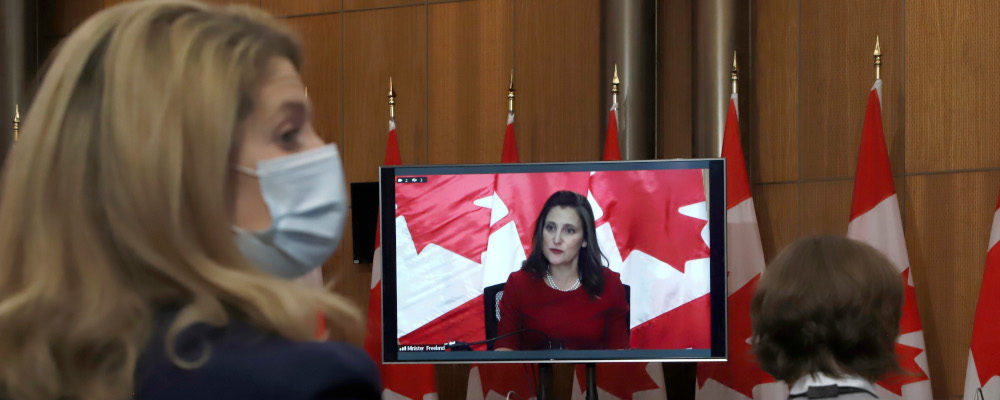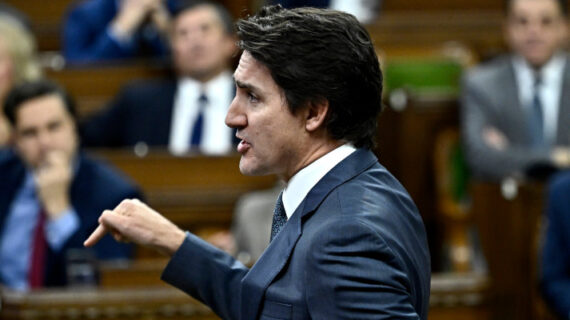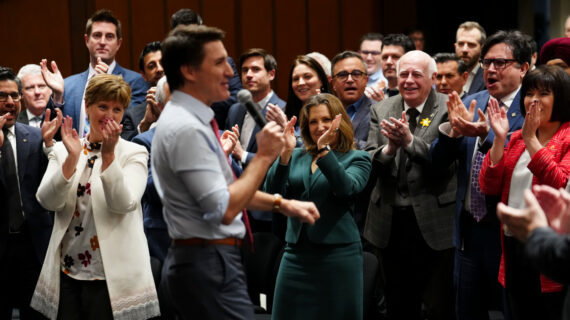You can be forgiven if you have not yet read through all 96 pages of the Economic and Fiscal Update 2021 released by the federal government yesterday. No worries, though. We have got you covered here at The Hub. We have gathered several of our contributors to summarize the document’s key details and offer some initial takes on what it reveals about our economy and Ottawa’s finances moving forward.
Aaron Wudrick
Fall economic statements generally come in two flavours: basic “snapshots” of revenue and expenditures, or mini-budgets that include significant new permanent spending announcements. This one probably falls into the former category as new spending is essentially temporary emergency spending, related to both the pandemic and the flooding in British Columbia. It appears that Canadians will have to wait until a spring budget for a clearer sense of any major changes to the overall spending track. Such as, whether the government will be paring back its significant stimulus plans in the face of inflationary pressures (as pledged in the Liberal platform), whether any measures to boost weak growth (which the government projects will drop below two percent annually after 2023) will be introduced, as well as an outline of the path back to a balanced budget—something that has been missing since the Trudeau government’s first budget in 2016.
Aaron Wudrick is the director of the domestic policy program at the Macdonald-Laurier Institute.
Trevor Tombe
Canada’s finances took a significant hit from the pandemic. Large-scale income support programs to individuals and businesses and lower revenues combined to increase the federal debt by roughly $600 billion between 2019 and 2021. But the new projections in the fiscal update for 2021/22 suggest a stronger fiscal future than many previously expected is ahead.
Here’s a breakdown. The deficit next year is now projected at 2.2 percent of GDP, declining to 0.4 percent by 2026. The total federal debt will reach a peak of 48 percent of GDP this year—lower than the 51.2 percent previously projected. And this is set to decline to 44 percent by 2026.
And looking out further, my own projections (based on adjusting my fiscal model published here) suggest that at federal borrowing rates of three percent and nominal GDP growth rates of four percent, the federal debt returns to pre-COVID levels within 15 years or so (depending, of course, on future spending choices).
This is significant. For perspective, in the summer of 2020 I compiled some analysis that suggested that to return to pre-COVID debt levels by the mid-2030s, Canada would need a seven percent GST or equivalent spending reductions. Now we appear to be on that same debt trajectory without it. And carrying this elevated debt in the meantime also comes with a surprisingly limited fiscal burden. The update projects that debt service costs will average less than 1.2 percent over the next six months. This is identical to the debt burden projected in Budget 2019—prior to COVID—for years beyond 2021.
Much can change, of course, with mounting concerns around COVID variants. And one can certainly prefer a faster decline in federal debt than is on offer here. But it’s worth recognizing that the most significant federal borrowing outside of World War II appears entirely—if not easily—manageable.
Trevor Tombe is a professor of economics at the University of Calgary.
Sean Speer
Yesterday’s Economic and Fiscal Update is a mixed bag. There’s some good news embedded within its 96-pages. We’ve mostly recovered lost output from the pandemic and are now seeing positive progress on employment and short-term economic growth. The government reports, for instance, that the size of Canada’s economy will reach nearly $2.5 trillion this year, which is what was projected in the 2018 budget prior to the pandemic. These positive developments tell us that Canada has experienced something approximating a U-shaped recovery from the depths of the pandemic-induced recession.
One can dispute different aspects of the government’s fiscal response to the pandemic—including the design, generosity, and duration of various forms of emergency spending—but, in overall terms, these measures stabilized the economy and avoided significant economic harm for individuals and households. The government deserves credit for that.
Now the bad news. The first problem is that, notwithstanding higher real GDP growth in 2021 and 2022, the average annual growth rate between 2023 and 2026 is projected to be barely 2 percent. This is consistent with recent OECD projections that anticipate Canada will experience the slowest real GDP per capita growth among advanced economies over the next decade. Secular trends of sluggish economic growth and stagnant living standards ought to be a major—indeed, the most pressing—concern for Canadian policymakers.
Yet, as a number of economists and former public servants observed in a recent profile of the Department of Finance’s deputy minister Michael Sabia, the government still seems more concerned with a mishmash of equity issues. The Economic and Fiscal Update does nothing to signal a new, more growth-oriented agenda. Instead it presumes that the government’s emphasis on inclusion over growth is still the right priority. The risk of course is that we remain stuck in what has been described as a “two-percent trap” that contributes to a political economy cycle of pessimism, populism, and polarization.
The second problem is that there’s reason to be skeptical of the government’s medium-term fiscal plan. The Economic and Fiscal Update projects total program spending to significantly fall over the next two years as emergency pandemic spending winds down, and then grow at an annual average rate of 2.3 percent between 2023-24 and 2026-27. This rate of spending growth is substantially lower than anything that the Trudeau government has ever been able to achieve since first taking office. Between 2015-16 and 2019-20, for instance, federal program spending grew, on average, by 6.4 percent per year.
It seems highly implausible that the government will pursue a post-pandemic fiscal plan that amounts to a more than 50-percent cut in year-over-year spending growth relative to pre-pandemic levels. It’s far more likely that program spending in the coming years will grow at a rate closer to 6.4 percent than 2.3 percent—especially in a minority parliament in which the Liberals are dependent on support from the NDP to pass their budgets.
The fiscal results could be significant. Consider, for instance, projections for 2023-24 and 2024-25 in which total program spending is expected to climb by a mere 1.6 percent from $420.7 billion to $427 billion. If it were to grow instead by 6.4 percent, it would increase to $447 billion and, all things being equal, the annual deficit could climb from $29.1 billion to nearly $50 billion.
The key point here is that while the Economic and Fiscal Update contains some good news, fiscal risk is still tilted towards the downside and the cause of that risk isn’t exogenous. It’s the Trudeau government’s own high-spending tendencies.
Sean Speer is The Hub’s editor-at-large.




